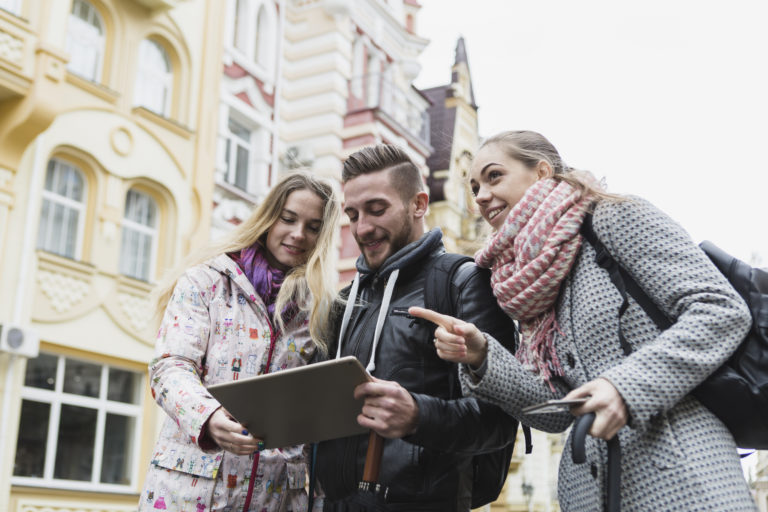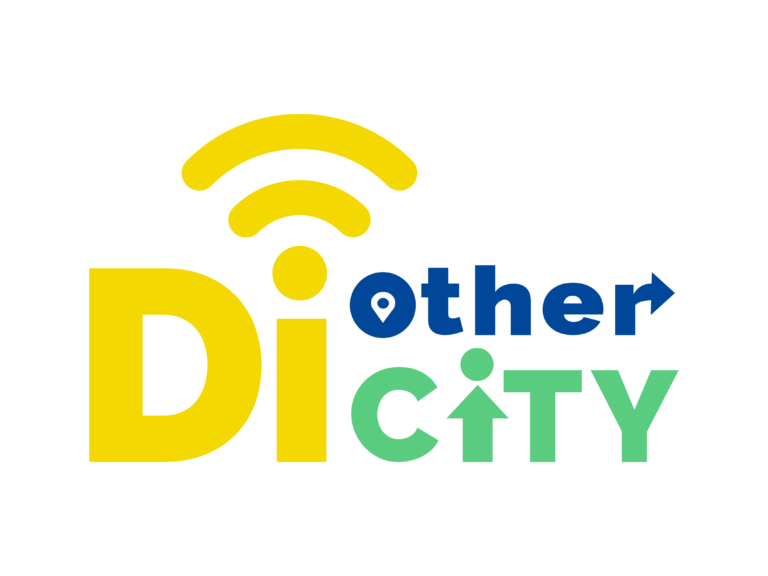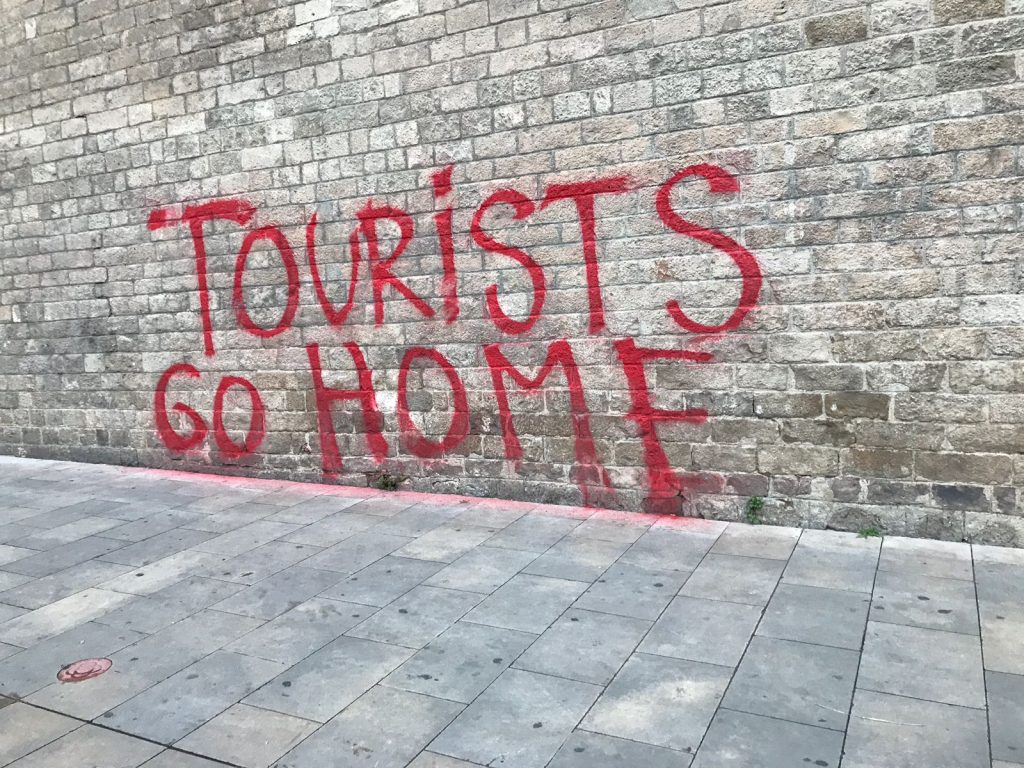The contentious sign above, which appeared in graffiti on the walls of tourist-overrun Barcelona in 2018, sent a clear message from local audiences to the swarm of visitors who make their way to the city every year: take your tourist dollars elsewhere. What lies at the heart of such a hostile message is citizen backlash to the pandemic of overtourism, defined as an extreme concentration of visitors in one place which can lead to its degradation and loss of attractiveness. This phenomenon came to a screeching halt in 2020 due to a pandemic of even greater proportions, COVID-19.
Despite the catastrophic economic impact of national shutdowns and cancelled travel plans, the respite from mass tourism afforded to European tourist hubs during the health crisis called into question the way tourist and cultural activities take place. With attempts at a return to normalcy now being made, new initiatives are cropping up which show that more sustainable solutions and local community satisfaction should no longer take a backseat to profit-based considerations.
One such initiative is our Erasmus+ funded project DiOtherCity, which aims to provide alternative solutions to professionals in the tourism and Cultural and Creative Industries (CCI) for the creation of tours and cultural activities in their cities. The project proposes an adult learning programme which aims to tackle not only the development of more sustainable and community-approved tourism/cultural experiences, but also focuses on providing training in hard and soft skills, as many of these professionals have been made redundant or have found themselves unskilled to navigate the changing reality of our interactions in the wake of the COVID-19 crisis.
As part of the provided training, the project prioritises the development of the following skills for tourism and CCI professionals:
- how to carry out research on the history and particularities of heritage objects and neighbourhoods, in order to turn innovative ideas into tangible and concrete initiatives that can draw in target audiences
- how to apply storytelling as a technique for curating a more engaging experience for visitors and consumers (with a focus on gamification methods and advice on marketing the tour/activity)
- how to strengthen entrepreneurial competencies, so as to create more responsible business opportunities with your tourism and cultural services/products (with additional tips on how to collaborate with local businesses in order to solve local challenges)
Apart from the skills mentioned above, the project also prioritises harnessing the potential of technology (and social media) for creating more immersive and interactive experiences for visitors and consumers when discovering cities. The 2019 briefing commissioned by the research service of the European Parliament, titled “Employment in the cultural and creative sectors”, identified adults from the CCIs as suffering from precarious employment, and remarked on their lack of entrepreneurial and digital skills. Thus, the training and the creation of the accompanying alternative city tours and cultural experiences will incorporate digital tools, such as Augmented Reality, QR codes, geolocation, and others, for addressing this prevalent issue, re-imagining and reinvigorating tourism and cultural practices in the process.

Photo created by freepik.com (link: https://www.freepik.com/photos/people)
Furthermore, what really sets this project and the initiatives it proposes apart from typical tourist and cultural activities (which favor large crowds and mass-produced ideas) is the shift it makes away from the ‘hotspots’ and towards the ‘hidden gems’ of a city instead. These alternative spaces located away from tourist and cultural centres are known as urban peripheries. Redirecting visitor flows away from congested tourist/cultural hubs and towards the periphery can meet pressing demands for more sustainable practices. Yet, the periphery’s appeal extends beyond attracting foreigners looking for more authentic ‘lived experiences’ – it also draws in inquisitive local audiences who feel alienated from the uninspiring, impersonal initiatives offered by mass tourism.
Our intended end result with the DiOtherCity project is to demonstrate how the creation of alternative heritage narratives combined with digital content creation can inspire win-win solutions for both tourism and CCI professionals and the local communities in which they operate. Regardless of whether your city is dealing with issues of overtourism or could benefit from new forms of tourism, adopting alternative practices and venturing off the beaten path may just lead you down the path to success.
For more information on the #DiOtherCity stay on the lookout for updates from the project website, coming soon!
References:
Pasikowska-Schnass, M. (2019) Employment in the cultural and creative sectors. Briefing. European Parliamentary Research Service, p. 12. Available at: https://www.europarl.europa.eu/RegData/etudes/BRIE/2019/642264/EPRS_BRI(2019)642264_EN.pdf.

Project website : coming soon
![]() Follow the project on Facebook: @Logopsycom
Follow the project on Facebook: @Logopsycom
#diothercity #erasmusplusproject
Our partners in this project are: CEPS Projectes Sociales, Citizens In Power, Fundacja Arteria, Les Apprimeurs, Mulab

